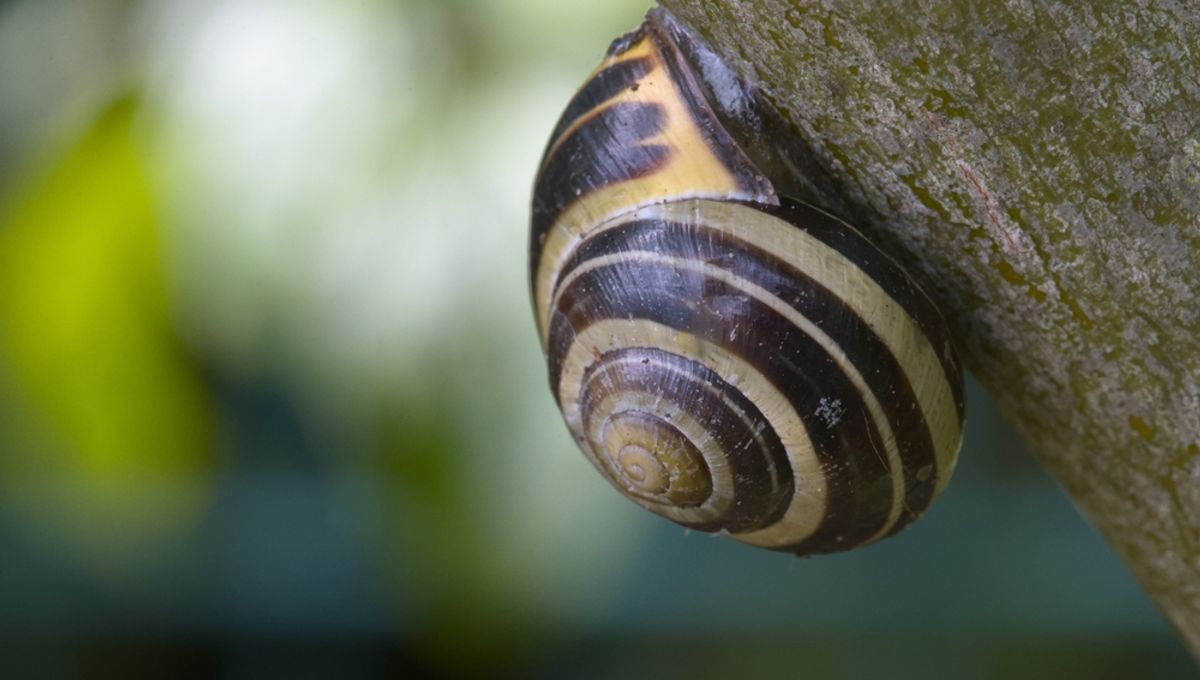
Land snails are usually found trailing around forest floors or lingering beneath dark, humid logs and rocks. However, some species break this convention by chilling out at the very tops of trees, where it is light, dry, and seemingly unfriendly to snailkind. A few years ago, a team of Japanese scientists decided to find out why some shelled heroes go against gravity and live in the unusual conditions of tree tops.
The rest of this article is behind a paywall. Please sign in or subscribe to access the full content.
Researchers from the University of Tsukuba and Hokkaido University investigated the behaviour of a species of tree-climbing land snail called the Sapporo mai-mai (Euhadra brandtii sapporo), which is native to a small part of forests in Hokkaido, the northernmost of Japan’s main islands.
Here, the snails spend the winter hibernating amongst the damp blanket of dead leaves that covers the cool, wet woods. By summer, their lifestyle has switched and the snails spend most of their time up in the canopy of oak and maple trees.
The trees reached up to 20 meters (65 feet) in height, so the team needed to use observation towers to keep an eye on their behaviour. They also set up sensors to monitor the temperature and humidity of the tree canopy compared to the earthy soil.
As a final step, they pierced a tiny hole in the snails’ shells and tied a thin thread through it, allowing them to closely follow when and where they migrated up the tree trunks.
The findings suggested that the Sapporo mai-mai snails head to the trees in early spring to avoid being eaten by ground beetles, which are most active in summer. This extra height also allowed them to avoid the wrath of larger predators, such as raccoon dogs and rodents.
Although birds and squirrels were spotted in the trees, they didn’t appear to significantly reduce the chances of the snails’ survival.
Overall, the survival rates of tree-dwelling snails were significantly higher than those remaining on the forest floor, at times nearly double by the end of the two-week experiment.
It was also apparent that the tree tops were not dry as they assumed and the humidity was at a comfortable level of 80 percent (not bad, if you’re a damp-loving snail). To adapt to life here, the snails switched their usual diet of leaf litter to epiphytic lichens and mosses that are found in the upper stretches of the trees.
“In conclusion, arboreality has a marked advantage in reducing mortality in E. b. sapporo and is probably supported by food availability as well,” the study authors note.
Elsewhere in the world, especially in tropical regions, entire species of land snails have evolved to live permanently among the branches, benefiting from humid air and plentiful food.
Even in your backyard, you might spot a garden snail making its way up a tree trunk – although it’s probably just out for a wander, not showing true arboreal behavior like E. b. sapporo or their tropical cousins.
The study was published in the journal Animal Behaviour in 2017.
Source Link: Tree-Climbing Snails Have Evolved Sneaky Strategies To Dodge Predators In Japan's Forests